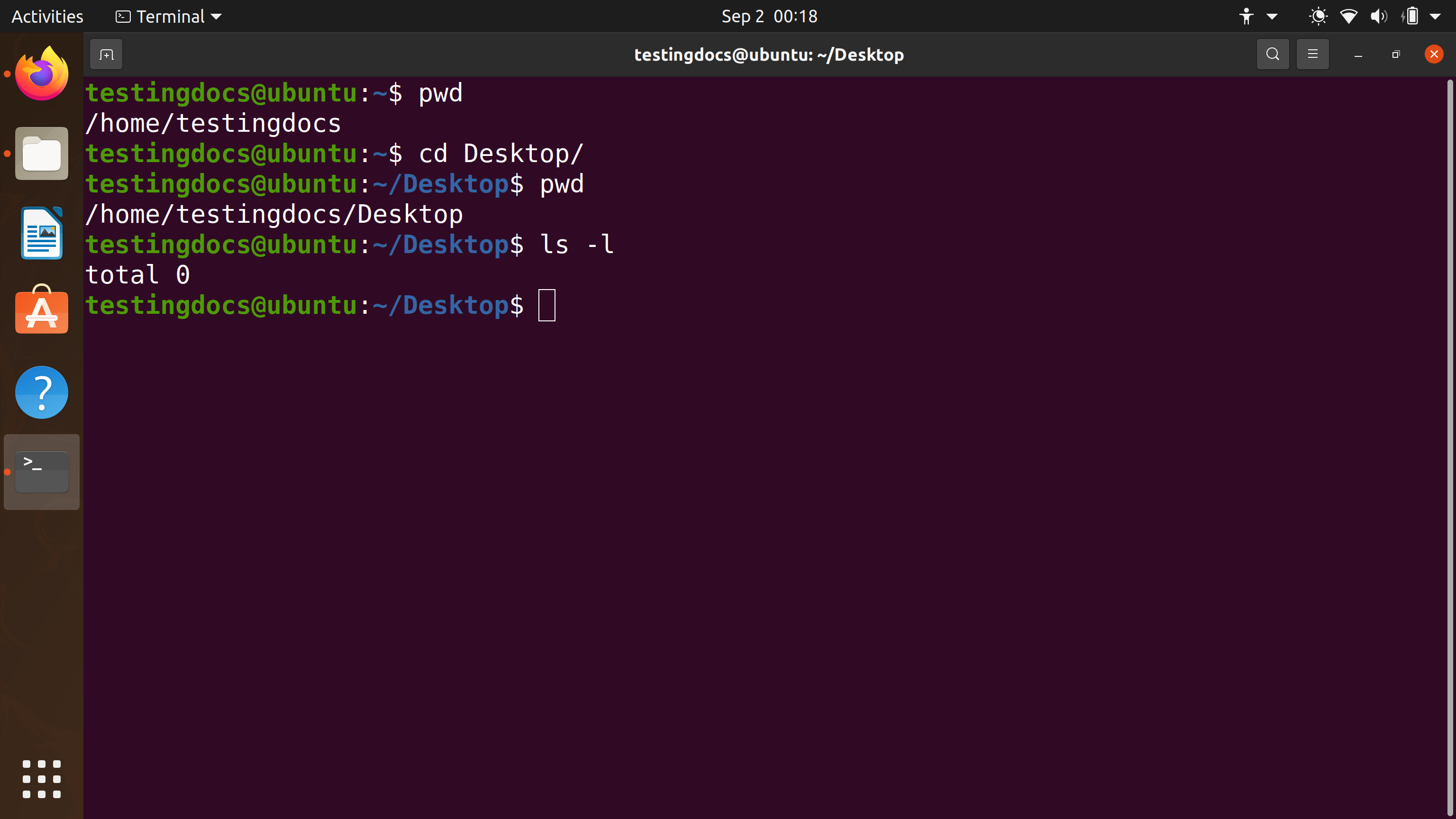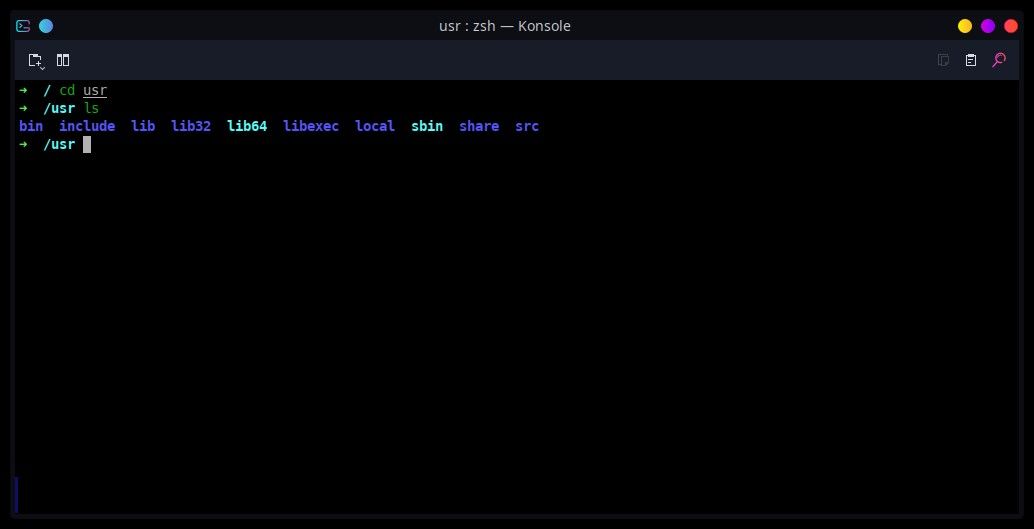Change Name Directory Linux - To rename a directory via the rename command, use the following syntax: For example, let’s say that you want. To rename a directory using mv, you can specify the current name of the directory as the source and the new name as the destination. Renaming a directory in linux doesn't harm the data inside it. It only changes the path to the data, leaving the files and directories intact. The mv command is the simplest and. This will rename the directory current. To rename a directory on linux, use the “mv” command and specify the directory to be renamed as well as the destination for your directory. Replace [expression] with the original search term, [replacement] with the new term, and. If you want to rename a directory at your level in the file system (e.g., you are at your home directory and want to rename a directory that is also in your home directory):
To rename a directory on linux, use the “mv” command and specify the directory to be renamed as well as the destination for your directory. It only changes the path to the data, leaving the files and directories intact. Replace [expression] with the original search term, [replacement] with the new term, and. To rename a directory via the rename command, use the following syntax: The mv command is the simplest and. For example, let’s say that you want. This will rename the directory current. Renaming a directory in linux doesn't harm the data inside it. If you want to rename a directory at your level in the file system (e.g., you are at your home directory and want to rename a directory that is also in your home directory): To rename a directory using mv, you can specify the current name of the directory as the source and the new name as the destination.
The mv command is the simplest and. For example, let’s say that you want. To rename a directory via the rename command, use the following syntax: To rename a directory using mv, you can specify the current name of the directory as the source and the new name as the destination. If you want to rename a directory at your level in the file system (e.g., you are at your home directory and want to rename a directory that is also in your home directory): This will rename the directory current. Replace [expression] with the original search term, [replacement] with the new term, and. To rename a directory on linux, use the “mv” command and specify the directory to be renamed as well as the destination for your directory. Renaming a directory in linux doesn't harm the data inside it. It only changes the path to the data, leaving the files and directories intact.
How To Change Directory In Linux? LinuxTect
Replace [expression] with the original search term, [replacement] with the new term, and. Renaming a directory in linux doesn't harm the data inside it. This will rename the directory current. For example, let’s say that you want. If you want to rename a directory at your level in the file system (e.g., you are at your home directory and want.
How To Change File or Directory Permissions in Linux Tom's Hardware
Renaming a directory in linux doesn't harm the data inside it. To rename a directory via the rename command, use the following syntax: It only changes the path to the data, leaving the files and directories intact. The mv command is the simplest and. This will rename the directory current.
Linux change name file
To rename a directory using mv, you can specify the current name of the directory as the source and the new name as the destination. Replace [expression] with the original search term, [replacement] with the new term, and. It only changes the path to the data, leaving the files and directories intact. To rename a directory on linux, use the.
What is /etc directory in Linux LinuxConfig
To rename a directory via the rename command, use the following syntax: The mv command is the simplest and. For example, let’s say that you want. Replace [expression] with the original search term, [replacement] with the new term, and. Renaming a directory in linux doesn't harm the data inside it.
How to change directory in terminal on Ubuntu Linux Tutorials Learn
Renaming a directory in linux doesn't harm the data inside it. To rename a directory via the rename command, use the following syntax: Replace [expression] with the original search term, [replacement] with the new term, and. It only changes the path to the data, leaving the files and directories intact. To rename a directory using mv, you can specify the.
How to Remove Directory in Linux Linux Magazine
To rename a directory using mv, you can specify the current name of the directory as the source and the new name as the destination. The mv command is the simplest and. It only changes the path to the data, leaving the files and directories intact. This will rename the directory current. Replace [expression] with the original search term, [replacement].
How to Add a Directory to PATH in Linux [With Examples]
To rename a directory using mv, you can specify the current name of the directory as the source and the new name as the destination. Renaming a directory in linux doesn't harm the data inside it. It only changes the path to the data, leaving the files and directories intact. To rename a directory via the rename command, use the.
Change Directory Linux Command
It only changes the path to the data, leaving the files and directories intact. To rename a directory on linux, use the “mv” command and specify the directory to be renamed as well as the destination for your directory. The mv command is the simplest and. This will rename the directory current. To rename a directory via the rename command,.
The Linux Directory Structure, Explained
To rename a directory via the rename command, use the following syntax: If you want to rename a directory at your level in the file system (e.g., you are at your home directory and want to rename a directory that is also in your home directory): This will rename the directory current. It only changes the path to the data,.
How to Change Directory in Linux Using cd Command Cloudbooklet
This will rename the directory current. To rename a directory on linux, use the “mv” command and specify the directory to be renamed as well as the destination for your directory. To rename a directory using mv, you can specify the current name of the directory as the source and the new name as the destination. For example, let’s say.
It Only Changes The Path To The Data, Leaving The Files And Directories Intact.
Renaming a directory in linux doesn't harm the data inside it. This will rename the directory current. To rename a directory on linux, use the “mv” command and specify the directory to be renamed as well as the destination for your directory. To rename a directory using mv, you can specify the current name of the directory as the source and the new name as the destination.
If You Want To Rename A Directory At Your Level In The File System (E.g., You Are At Your Home Directory And Want To Rename A Directory That Is Also In Your Home Directory):
To rename a directory via the rename command, use the following syntax: For example, let’s say that you want. Replace [expression] with the original search term, [replacement] with the new term, and. The mv command is the simplest and.






![How to Add a Directory to PATH in Linux [With Examples]](https://linuxiac.b-cdn.net/wp-content/uploads/2022/02/add-directory-to-path-permanent.png)


